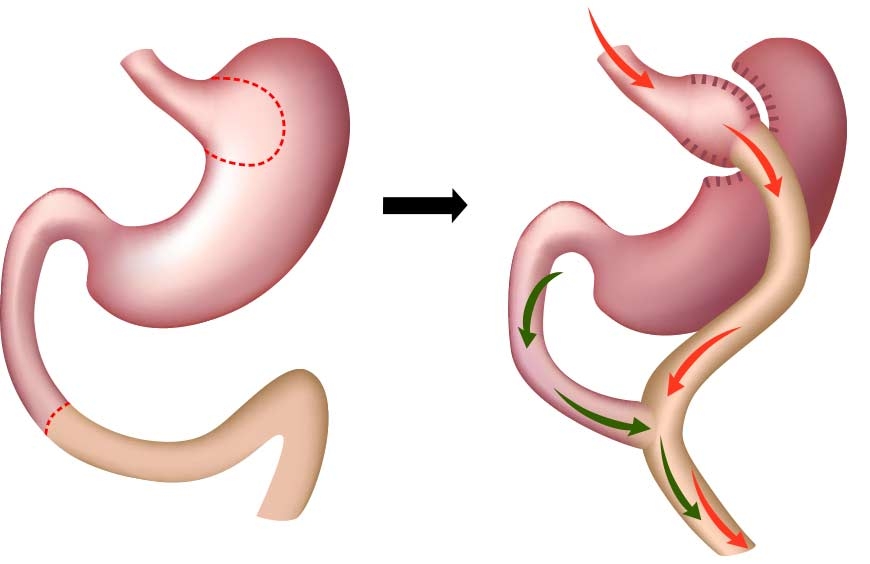Gastrik Bypass

astric Bypass is a relatively older type of surgery compared to other bariatric surgery methods. For this reason, it can be considered as the most frequently performed obesity surgery method in the world.
The procedure is a two-stage surgery. In the first stage, a small stomach is created. For this, stomach tissue close to the esophagus – stomach junction is used. Small intestines are connected from a distance to this newly formed small stomach.
The mechanism here is both restrictive as in the sleeve gastrectomy, and foods encounter the bile and pancreatic enzymes poured into the duodenum in the small intestine, far from the place where they should be. Thus, the breakdown and absorption of food becomes difficult and a mechanism that impairs absorption is added. In short, the patient eats little and gets little benefit from what he eats. Here, the change in the gastrointestinal system hormones is more pronounced than in the tube stomach. As a result, the feeling of hunger decreases, the feeling of satiety increases, and the blood sugar follows a smoother course.
The patient can lose 40-50% of his total weight. The gastrointestinal system affects hormones more clearly. It is a relatively reversible process. The disadvantages are that it may be necessary to use drugs for a long time, perhaps for life, and the risk of complications is slightly higher than in sleeve gastrectomy.
After the patient is admitted to the hospital on the day of surgery, his preparations are completed and he is taken into surgery. The operation takes an average of 90 – 120 minutes and the patient returns to bed in a total of 5-6 hours. 6 -8. Our patients, who start walking within the hour, do not complain of serious pain afterwards. Patients who can drink water on the 1st day after the operation pass the necessary tests as of the 2nd and 3rd days and continue to take fluids and leave the hospital on the 4th day.


